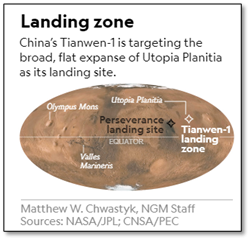Friday, 21st May 2021
Plea for independent panel to appoint EC members
In News
A petition has been filed in the Supreme Court seeking the constitution of an independent collegium to appoint members of the Election Commission.

About the Petition
- The petition has been filed by the Association for Democratic Reforms stating that the practice of the government making the appointments to the poll body is a violation of the Basic Structure of the Constitution and impacts the free and fair elections in a democracy.
- The petition has mentioned that the recommendation to have a neutral collegium to fill up vacancies in the Election Commission has been given by several expert committees, commissions since 1975.
|
Appointment of Members of Election Commission ● The President appoints Chief Election Commissioner and Election Commissioners. ● They have tenure of six years, or up to the age of 65 years, whichever is earlier. ● They enjoy the same status and receive salary and perks as available to Judges of the Supreme Court of India. |
Need for an independent panel for appointment of EC members
- Insulation from Political and Executive Interference: The present system of appointment of members of the Election Commission leads to excessive interference of the executive and ruling party and compromises the constitutional mandate of an independent election commission.
- Avoid conflict of interest: The EC is not only responsible for conducting free and fair elections but also performs several quasi-judicial functions between the various political parties including the ruling government and other parties. This creates conflict of interest in a parliamentary system as the government is largely drawn from the ruling party.
Recommendation of Committees on Independent Collegium for Election Commission
- Dinesh Goswami Committee: It recommended effective consultation with neutral authorities like the Chief Justice of India and the Leader of the Opposition for the appointment in the Election Commission.
- Second Administrative Reforms Commission: It suggested a collegium system for CEC and ECs.
- Law Commission Recommendation: In its 255th Report, it mentioned that the Election Commission should be insulated from political and executive interference and suggested an independent Collegium for the same.
Six Indian Sites added to Tentative UNESCO Heritage List Sites
In News: Six Indian sites under Archaeological Survey of India have been shortlisted by United Nations Educational Scientific and Cultural Organization (UNESCO) to be classified as world heritage sites. They are:
Satpura Tiger Reserve:
- Located in Madhya Pradesh, STR has the largest tiger population in India. It forms a watershed between Narmada and Tapti river.
- It has more than 50 rock shelters with paintings that are 1500 to 10,000 years old.
Ghats of Varanasi:
- The Ganga river with its riverfront ghats fulfill the criteria of Cultural Landscapes. There are around 84 Ghats in Varanasi that extend from Assighat to Rajghat.
Megalithic site of Hire Benkal:
- There are various prehistoric megalithic monuments at Hire Benkal in Karnataka.
- Some funerary/burial monuments are still intact.
Maratha Military Architecture in Maharashtra:
- There are 12 forts in Maharashtra dating back to the era of the 17th-century Maratha king Chhatrapati Shivaji. The nomination of these forts is under the theme “Maratha Military Architecture in Maharashtra and Guerrilla Warfare”.
Bhedaghat-Lametaghat in Narmada Valley- Jabalpur:
- Bhedaghat, the Grand Canyon of India, is a town in the Jabalpur district and is known for its marble rocks and their various morphological forms on either side of the Narmada river which flows through the gorge and plunges in a waterfall – Dhuandhar waterfall giving out the appearance of a smoke cascade.
- Several dinosaur fossils have been found in this region.
Temples of Kanchipuram:
- Situated on the banks of River Vegavathi, this historical city once had 1,000 temples (hence also known as the “City of 1000 temples”.
- Its rich legacy has been the endowment of the Pallava dynasty, which made the region its capital.
World Heritage Site: It is the designation for places on Earth that are of outstanding universal value to humanity and as such, have been inscribed on the World Heritage List to be protected for future generations to appreciate and enjoy.
Criteria for Inclusion as a World Heritage Site:

Judicial Overreach
In News
Recently, the Supreme Court (SC) stayed the Allahabad High Court’s (HC’s) order to the Uttar Pradesh government to impose lockdown in five districts in view of the Covid-19 situation.
About the News
- The SC through this stay indicated that while it does indeed have a Constitutional duty of the court to deliver justice, this duty also includes upholding the separation of powers, thus averting judicial overreach.
- There have been many other cases in recent times where the High Court (HC) under Article 226 and (extraordinary jurisdiction to protect personal liberty) and the Supreme Court (SC), under Article 32 (extraordinary jurisdiction to protect personal liberty) of the Constitution, have taken suo-motu cognizance and acted on some petitions seeking judicial interference in some urgent issues during the pandemic. Example: The petitions pertaining to the production and allocation of medical oxygen, urgent requirement of basic medical infrastructure such as beds and drugs.
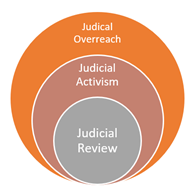
What is Judicial Overreach?
- Definition: A situation where the court encroaches upon the role of the legislature by making laws and encroach upon the role of executive by making rules or indulging in censorship can be termed as judicial overreach.
- Judicial Activism and Overreach: There is a thin line between activism and overreach. While judicial activism is considered positive to supplement the fallings of the executive, but the overreach into the executive's domain is considered an intrusion into the proper functioning of democracy. Just as independence of the judiciary is part of basic structure, the primacy of the legislature in policy making is also part of basic structure and interference by the courts into their domain is not justified.
What factors lead to Judicial Overreach?
- Seeking public accountability: Through suo motu hearing, the court exercises its constitutional authority under Article 32 to fulfil its constitutional role of maintaining checks and balances within the framework of judicial review. The SC is does not seek to take policy decisions but is seeks public accountability and transparency on the executive’s policy decisions and its failure to act in time. Example: When communications with the executive agencies failed private hospitals in the Delhi approached HC seeking judicial interference in maintaining oxygen capacity.
- Protection of life under the Article 21: The courts are bound by its duty to protect the right to life under Article 21. In the above example, the Delhi HC was forced to facilitate the supply and allocation of oxygen between the Centre and the Delhi government. This is not just because the court is eager to exercise its extraordinary constitutional responsibility for protecting the lives of people. It is also because the federal cooperation expected between the Union and states has broken. This action of HC also upholds federalism and constitutional democracy.
- To step into a vacuum created by the executive: Sometimes, the judiciary is forced by citizens to step into a vacuum created by the executive and fulfil its constitutional duty to do justice. And this, by its very nature, unfortunately warrants judicial governance. Example: Due to the silence of the Legislature, the Supreme Court was compelled to issue the Vishakha guidelines in 1998. The judicial over-reach is the direct result of legislative and executive neglect or under-reach.
- Dilemma of judicial overreach and judicial inactivity: There have been instances when the Speaker of the House has not acted under the anti-defection law for months. In such situations, when a citizen approaches the Court, there are two options before the Court, to let the Legislature and the MLAs sort out their problems or to intervene in accordance with the Constitution and pass appropriate orders. This leads to an unfortunate dilemma of judicial overreach and judicial inactivity.
- Facilitate a dialogue among stakeholders: In the current pandemic, as the daily infection numbers and death toll acquired frightening levels, the constitutional courts felt obliged to take it upon themselves to protect the right to life and good health of the population. Through these actions, the Court was not usurping the executive’s role, but only wanted to facilitate a dialogue among stakeholders. As long as this position is clear, the present intervention need not be seen as a dangerous overreach.

Why is it a problem?
- Separation of powers between the three bodies: Judicial overreach challenges the doctrine of separation of powers, which should be considered a basic structure of our constitution. The judiciary has also acted in several instances in the grey areas separating its role from that of the executive and the legislature. The doctrine of separation of powers is not codified in the Indian constitution. Indeed, it may be difficult to draw a strict line demarcating the separation.
- Morale of the Executive: Judicial overreach may have a negative impact upon the morale of the executive because the executive's function of policy making and policy implementation are more challenging and depends upon the 4F i.e. fund, function, framework and functionary. Because of the judicial overreach, sometimes the coordination between the executive and judiciary gets affected which has a negative impact upon the constitutional framework.
- Short-sighted and arbitrary approach: Judicial overreach is writ large with judicial officers and lawyers micro-managing the day-to-day affairs in the country. Government officials have to brief the bench instead of being allowed to act in real-time. For the courts to continually micromanage the situation and point out inadequacies, it happens to be a short-sighted and arbitrary approach.
- Not directly accountable to people: Unlike the other two branches of the constitution, the judiciary as an institution is not directly accountable to people. This very lack of accountability requires the judiciary to practice self-restraint, act responsibly within the ambit of its constitutional powers. Judiciary, like all other institutions in a democracy, should know and understand its limits. A country cannot be run on judicial decrees.
Conclusion
The supremacy of each of the three organs of the State i.e. legislature, executive and judiciary in their respective fields of operation needs to be emphasised. The power of judicial review of the executive and legislative action must be kept within the bounds of constitutional scheme, so that there may not be any occasion to entertain misgivings about the role of judiciary in outstepping its limit by unwarranted judicial activism. The judiciary must evolve a set of guidelines that lays down a procedure in consonance with the executive so that it does not delve into issues which are beyond its domain of expertise.
Question: What is Judicial Overreach? What are the factors which necessitate such overreach? Explain its impact on democracy.
https://indianexpress.com/article/opinion/judicial-overreach-in-times-of-covid-19-7320256/
https://www.hindustantimes.com/opinion/covid19-when-the-courts-step-in-101620131726967.html
https://www.hindustantimes.com/india/judicial-overreach-overruled/story-EzeEhkn0JiYk9t4YMJ4TRP.html
Secondary Sources:
https://www.theleaflet.in/agr-order-a-case-of-subjective-judicial-overreach/
This Day in History- Anti-Terrorism Day
May 21- Anti-Terrorism Day. India observes Anti-Terrorism Day to commemorate the death anniversary of former PM Rajiv Gandhi, who was assassinated on May 21, 1991 in a terrorist attack. On this day, ‘Anti Terrorism Pledge’ is taken in all the government offices, public sector undertakings, and other public institutions, etc. The objective behind observing Anti-Terrorism Day is to spread the message of peace, humanity, unity, and harmony among the people, and to make them aware of the anti-social acts of terrorism.
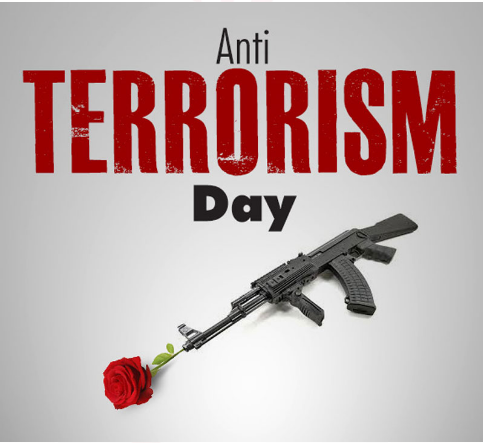
Image of the Day -Ronne Ice shelf in Antarctica

This is the image of the Ronne Ice shelf in Antarctica, that calved a new iceberg named A-76 with a surface area of 4320 km2, making it the largest iceberg on earth at present. It is now floating in the Weddell Sea. It was sighted by the Copernicus Sentinel-1 mission, a European radar imaging satellite used for earth viewing. According to scientists, periodic calving off of large chunks of those shelves is part of a natural cycle. But in recent years some ice shelves along the Antarctic Peninsula have undergone rapid disintegration, a phenomenon which may be related to climate change.
‘Infrastructure’ status for exhibition and convention centers
Context: The Finance Ministry has granted ‘Infrastructure’ status for exhibition and convention centres.
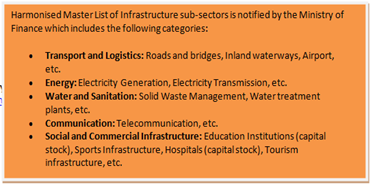
- Exhibition-cum-Convention Centre has been included in the Harmonised Master List of Infrastructure sub-sectorsby insertion of a new item in the category of Social and Commercial Infrastructure.
- The benefits available as ‘infrastructure’ projectswould only be available for projects with a minimum built-up floor area of 1,00,000 square metres of exclusive exhibition space or convention space (exhibition centres, convention halls, auditoriums, plenary halls, business centres, meeting halls, etc.)
- Becoming a MICE (Meetings, Incentives, Conferences and Exhibitions) destinationcan generate significant revenue with several global companies active in India.
Primary source: https://www.thehindu.com/business/finmin-grants-infrastructure-status-for-convention-centres/article34600605.ece
Gholvad Sapota (Naseberry)
- Context: Giving a major boost to shipment of GI certified products, the GI certified Gholvad Sapota from Maharashtra is being exported to UK.
- The fruit is popular for its sweet and unique taste. The unique taste is believed to be derived from calcium rich soil of the Gholvad village in Palghar district.
- Karnataka and Maharashtra are the major producers of this fruit.
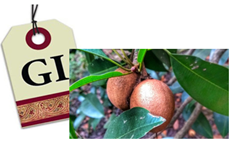
Primary source: https://www.thehindubusinessline.com/markets/commodities/gi-certified-gholvad-sapota-from-maharashtra-finds-its-way-to-uk/article34603340.ece
Single-Use Plastic
- Context: A report on who makes money from single-use plastic was published by Minderoo, a non-profit organization.
- Single-use plastics (disposable plastics) are those plastics which are used only once before they are thrown away or recycled. They include plastic bags, straws, water bottles, food packaging plastics, etc.
- Medical devices and instruments such as syringes, applicators, drug test kits, bandages, etc. are made of single use plastic, the use of whichprevents the spread of infection.
- Single-use plastic products have been enlisted in the fight against food waste, keeping food and water fresher for longer and reducing the potential for contamination.
- Single-use plastic business production capacity is forecast to grow by 30% in the next 5 years.
- However, they pose very serious threat to our ecosystem.

Primary source: https://indianexpress.com/article/world/who-behind-global-surge-single-use-plastic-7321181/
https://www.lessplastic.org.uk/9-reasons-refuse-single-use-plastic/
AIM-ICDK Water Innovation Challenge
- Context: Atal Innovation Mission (AIM), NITI Aayog in partnership with Innovation Center Denmark (ICDK) concluded the global finals of the Next Generation Water Action (NGWA) Water Innovation Challenge.
- Next Generation Water Action is an ambitious initiative to engage young talents from leading universities and early-stage start-ups around the world to develop water solutions towards smart livable cities.
- The Water Innovation Challenge was initiated to identify promising innovators from India, who could represent in the global Next Generation Water Action program.
- Innovative ideas were invited in following challenge areas:
- Digital water management solutions
- Solutions for monitoring and prevention of leakage in city water supply
- Waste-water management across rural belts and urban settlements
- Rainwater harvesting in rural and urban settlements and
- Safe and sustained drinking water

Primary source: https://pib.gov.in/PressReleaseIframePage.aspx?PRID=1719836
Warehousing industry needs a makeover to help farm sector- HBL
Essence: Food grains production in India has come a long way, from a consistent net deficit situation in pre-Green Revolution times to one of surplus in the last few years. However, this increase had brought along the greater challenge of efficient storage. This article makes a case for revamping warehouse industry through appropriate training and skilling of warehouse personnel.
Why you should read this article?
- Know, why there is dire need for expansion of storage of foodgrains its scientific management.
- Learn about the challenges in developing efficient storage system such as lack of mechanisation, lack of skilled commodity warehousing personnel among others.
- Understand how a well-trained warehouse manager can prove to be an asset to the warehousing business.
Article Link: https://www.thehindubusinessline.com/opinion/warehousing-industry-needs-a-makeover/article34608162.ece
The outdated nature of bureaucracy- TH
Essence- This article is written in backdrop of how COVID-19 has tested the resilience of all public institutions which are traditional and proved to be ineffective in dealing the pandemic. We give relevance to Weberian bureaucracy which prefers generalist over a specialist apart from leadership based on position. During the pandemic, the bureaucracy could not go beyond giving orders by taking the onus, explaining and handling the crisis. The need of the hour is to adopt a model based on collaborative governance where public sector, private players and civil society (NGOs) work together for effective public service delivery.
Why you should read this article?
- To get an overview of India’s public and Private sector efficacy in dealing COVID-19 pandemic.
- To know the concept of Weberian bureaucracy and why we still follow this?
- To understand how collaborative governance model has benefited India in past and how this model can help in public service delivery.
Article Link: https://www.thehindu.com/todays-paper/tp-opinion/the-outdated-nature-of-bureaucracy/article34610367.ece
SR Sankaran: This ‘People’s Officer’ Is the Only IAS To Be Honoured with a Statue
About ‘People’s Officer’:
- SR Sankaran worked tirelessly towards the upliftment of the poor and downtrodden throughout his career
- His service and dutiful nature earned him the sobriquet of “people’s IAS officer.”

His Contribution:
- He made diligent efforts in bringing landmark policies like the ‘Abolition of Bonded Labour Act’ and the ‘Land Distribution Act’ to the fore.
- He pioneered the Integrated Development Schemes as well as Special Component Plan for the SC/ST which made him a champion of the marginalised
- He worked towards eliminating the inhuman practice of manual scavenging and freeing manual labourers involved in the process.
His Lifestyle:
- He had little inclination towards material wealth or higher posts and has been living a very simple life.
- He had extremely sober dressing style that would often lead people to assume that he was a school teacher.
Values upheld by him:
- Simple Living High Thinking, Compassion, Empathy which are the foundation civil servant values upheld by 2nd
Lessons to be learnt by our youth:
- Take inspiration from the ideals, character building, strengthening the moral framework, etc.
Share the article
Get Latest Updates on Offers, Event dates, and free Mentorship sessions.

Get in touch with our Expert Academic Counsellors 👋
FAQs
UPSC Daily Current Affairs focuses on learning current events on a daily basis. An aspirant needs to study regular and updated information about current events, news, and relevant topics that are important for UPSC aspirants. It covers national and international affairs, government policies, socio-economic issues, science and technology advancements, and more.
UPSC Daily Current Affairs provides aspirants with a concise and comprehensive overview of the latest happenings and developments across various fields. It helps aspirants stay updated with current affairs and provides them with valuable insights and analysis, which are essential for answering questions in the UPSC examinations. It enhances their knowledge, analytical skills, and ability to connect current affairs with the UPSC syllabus.
UPSC Daily Current Affairs covers a wide range of topics, including politics, economics, science and technology, environment, social issues, governance, international relations, and more. It offers news summaries, in-depth analyses, editorials, opinion pieces, and relevant study materials. It also provides practice questions and quizzes to help aspirants test their understanding of current affairs.
Edukemy's UPSC Daily Current Affairs can be accessed through:
- UPSC Daily Current Affairs can be accessed through Current Affairs tab at the top of the Main Page of Edukemy.
- Edukemy Mobile app: The Daily Current Affairs can also be access through Edukemy Mobile App.
- Social media: Follow Edukemy’s official social media accounts or pages that provide UPSC Daily Current Affairs updates, including Facebook, Twitter, or Telegram channels.



